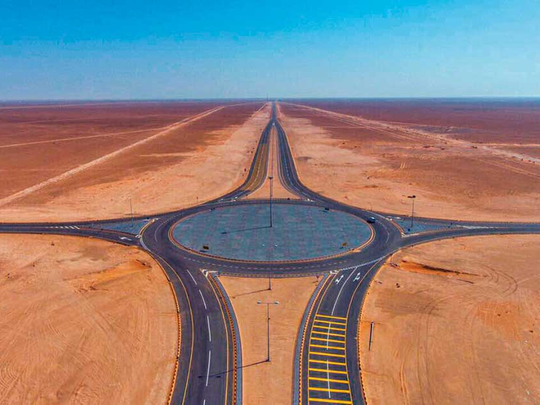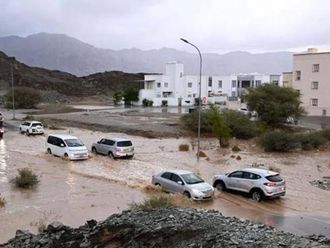
Muscat:Muscat: The Omani side of the Empty Quarter road, that links Oman to Saudi Arabia, has been completed Gulf News has learnt.
Ali Al Kalban, chairman of Ibri Chamber of Commerce and Industry, told Gulf News that work has already begun to build petrol stations, restaurants, mosques and hotels on the Omani side of the 726 kilometre-long road. The entire project was expected to be completed in the beginning of 2017, but challenging topography on the Saudi side of the border has forced delays.
The road is expected to boost trade and tourism between the two countries and will also make it easier for families who have relatives on either side of the border to visit each other more often. The road has been touted as a historic milestone as it would link two of the biggest GCC countries by land for the first time.
Saudi and Omani travellers currently have to pass through the UAE to visit one another’s country. The new road cuts the distance to Saudi Arabia by more than 800 kilometres. Currently, the distance between Oman and Saudi Arabia via UAE is nearly 2,000 kilometres
More than 200 million Omani riyals (Dh1.9 billion) have been spent by the Oman government on construction of the road on its territory while Saudi media has reported it has spent “over a billion” riyals on its side.
They have no released any exact figures on how much they spent on the road.
A 160-kilometre stretch of the road is in Oman, while 566 kilometres is in Saudi Arabia.
In Oman, the road starts from Tanam area of Ibri province, passing through oilfields until it reaches the Oman-Saudi border in the Empty Quarter.
In Saudi Arabia, the stretch will link Haradh-Batha road with Al Shiba oilfield at a length of 319 kilometres and the stretch between Al Shiba to the Omani border will be 247 kilometres.
The road has been called an “engineering marvel” as it is built on quick sand.
The Empty Quarter is the largest contiguous sand desert in the world, spanning an area of about 640,000 square kilometres.
The project involved constructing bridges between sand dunes. About 130 million cubic metres of sand was transported to construct the bridges — equivalent to the amount of sand needed to build 26 pyramids.
More than 100,000 Omani nationals travel to Makkah for Haj and Umrah every year, taking buses or their own vehicles, according to the Ministry of Awqaf and Religious Affairs.
Conversely, thousands of Saudis flock to Salalah province, in the southern part of Oman, which is the country’s most popular region due to its lush greenery and sub-tropical climate in summer.












